|
Gloster Meteor F.8

Airfix 1/72 scale
S
u m m a r y |
| Description and Catalogue Number: |
Airfix Kit No. A04064 - Gloster Meteor F.8 |
| Scale: |
1/72 |
| Contents and Media: |
102 parts in medium grey injection moulded plastic; nine parts in clear plastic; markings for three aircraft |
| Price: |
£23.99 EU Price (£19.99 Export Price) plus shipping available online from Hannants |
| Review Type: |
FirstLook |
| Advantages: |
High level of detail; crisp and fine surface textures; may be built with undercarriage up or down; poseable control surfaces; seated pilot figure included; lots of useful options including drop tanks, slipper tank, poseable speed brakes, alternative ailerons, intakes and canopies. |
| Disadvantages: |
None noted at this stage. |
| Conclusion: |
This is a really nice kit with a relatively modest parts count, a high level of detail and plenty of options in the box. The quality of the plastic is good - smooth and ready for a silver finish without any further preparation. Surface textures are fine too. This kit pips the old Xtrakit / Special Hobby kits to the post in terms of surface textures, and boasts clearly superior detail. With long-run locating pins and tabs, the Airfix kit should be easier to build too. Airfix's 1/72 scale Meteor F.8 is a nicely detailed kit that should appeal to any early jet age fans. |
Reviewed by Brett Green

The Gloster Meteor was the first British jet fighter and the Allies' only operational jet aircraft during the Second World War.
The Meteor's development was heavily reliant on its ground-breaking turbojet engines, pioneered by Sir Frank Whittle and his company, Power Jets Ltd. Development of the aircraft itself began in 1940, although work on the engines had been under way since 1936.
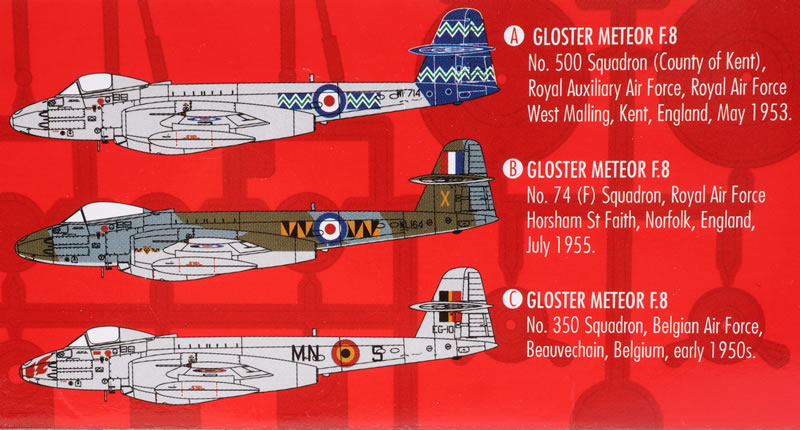
The Meteor first flew in 1943 and commenced operations on 27 July 1944 with No. 616 Squadron RAF. The Meteor was not a sophisticated aircraft in its aerodynamics, but proved to be a successful combat fighter.
Several major variants of the Meteor incorporated technological advances during the 1940s and 1950s. Thousands of Meteors were built to fly with the RAF and other air forces and remained in use for several decades. The Meteor saw limited action in the Second World War. *
The Meteor F.8 in 1:72 scale
Considering the historic role played by the Gloster Meteor, it is surprising that the recent flood of new kit releases has not generated a definitive, state-of-the-art injection moulded plastic Meatbox in 1/72 scale.
Xtrakit released their 1/72 scale Gloster Meteor F.8 in 2006. This is a really nice little kit - well detailed, accurate and quite easy to build too, thanks to sensible parts breakdown and the absence of multi-media parts.
I built the kit myself shortly after its initial release and I was very pleased with the result.

Xtrakit 1/72 Meteor F.8 built by Brett Green in 2006
This model has subsequently been re-packaged by Special Hobby in various versions.
Prior to the Xtrakit offering, it had been three decades since any other 1/72 scale Meteor F.8 had hit the market.
So here we are in 2022 and the iconic British brand Airfix takes its turn with this classic British jet.
This brand new 1:72 scale Gloster Meteor F.8 is packed in a typical Airfix top-opening box. Inside are a modest 102 parts in medium grey coloured plastic and nine parts in clear.
The plastic is darker, smoother and shinier than other recent Airfix releases, which have been a paler blue-grey shade and quite soft.
Surface textures are beautifully done with fine, crisply recessed panel lines, raised panels and other structural features where appropriate. The engine covers feature lovely fine raised rivets.
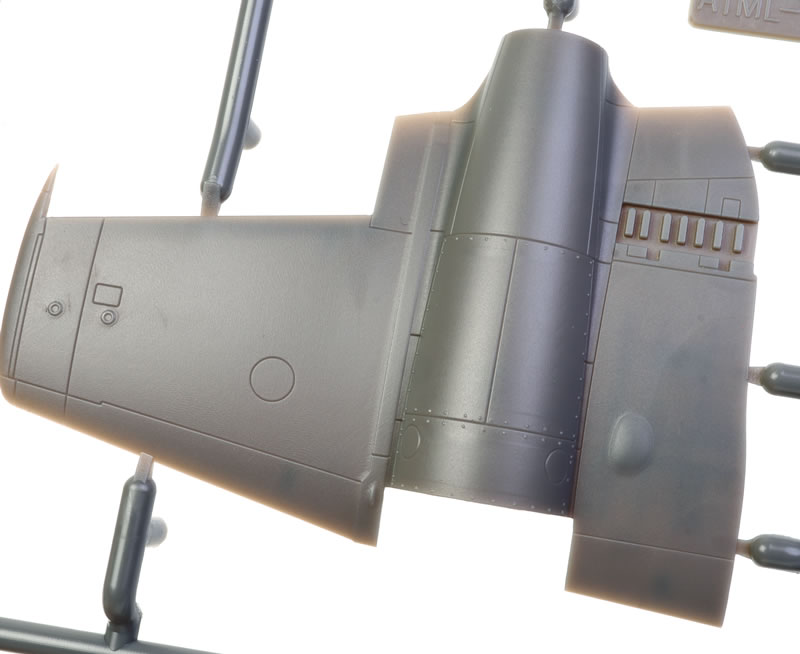
Construction begins in the cockpit with nicely detailed sidewalls. Features are moulded in place. This seems to me to be a good compromise between detail and ease of construction, particularly as the front office is painted black and you won’t see much anyway.
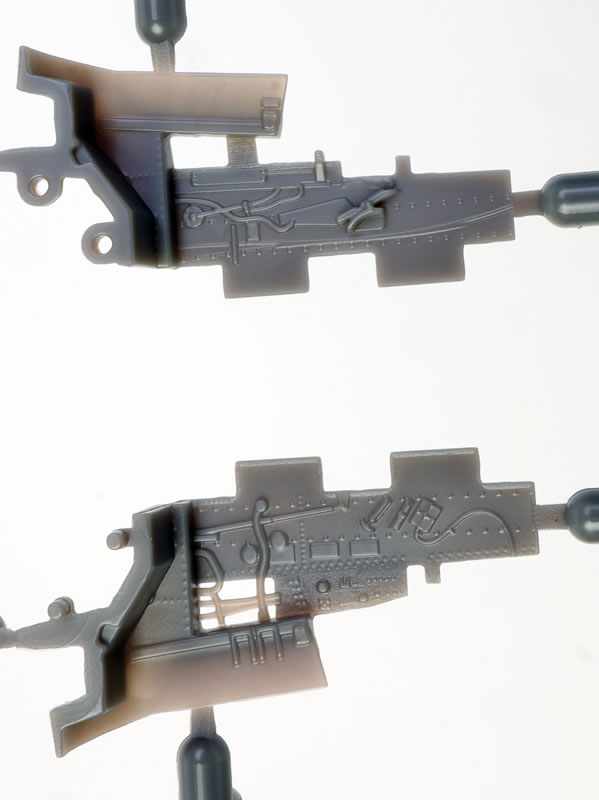
The Martin Baker Mk.2 ejection seat is made up from four pieces including a nice fine pull handle above the pilot's head. Harness straps are not moulded on place nor provided as decals, so you are on our own there.
The small instrument panel features raised dial and switch detail. Airfix also supplies a decal to lay over the raised detail if you prefer that to painting.
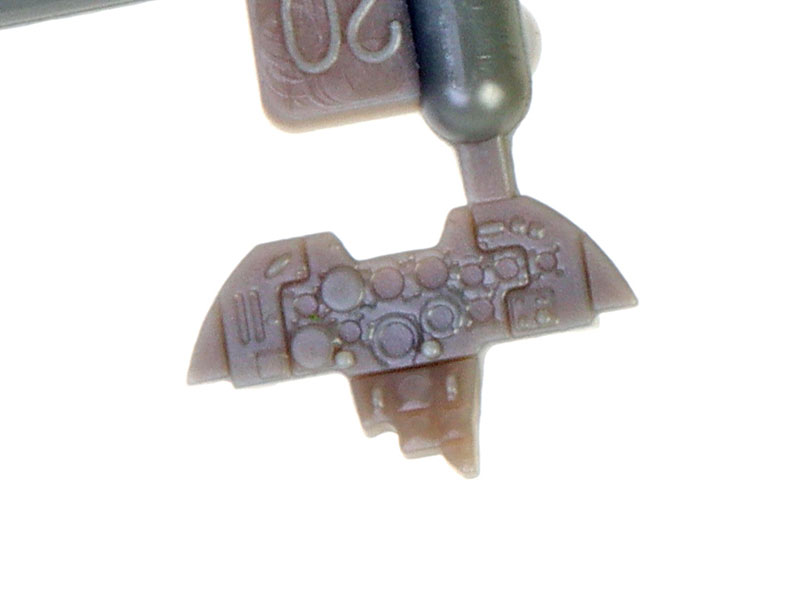
The instructions note that 8 grams of nose weight are required to keep the front wheel on the ground.
The nose gear leg and retraction mechanism are attached to the front of the cockpit tub then are covered by the nose cone.
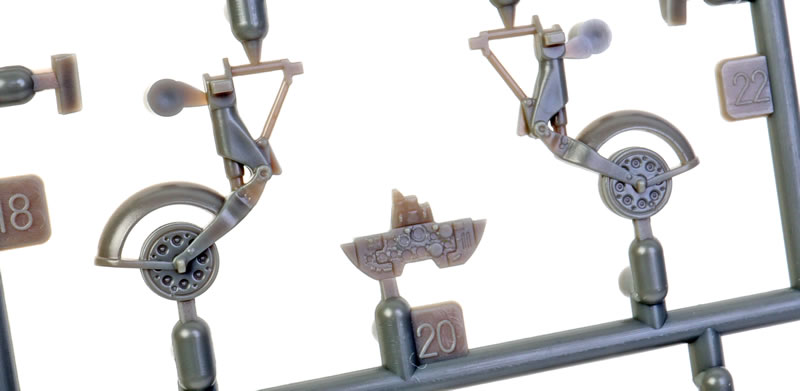
Optional closed undercarriage doors are fitted from the inside of the wing if you are building your Meteor wheels-up. Closed nose wheel bay doors are included too.
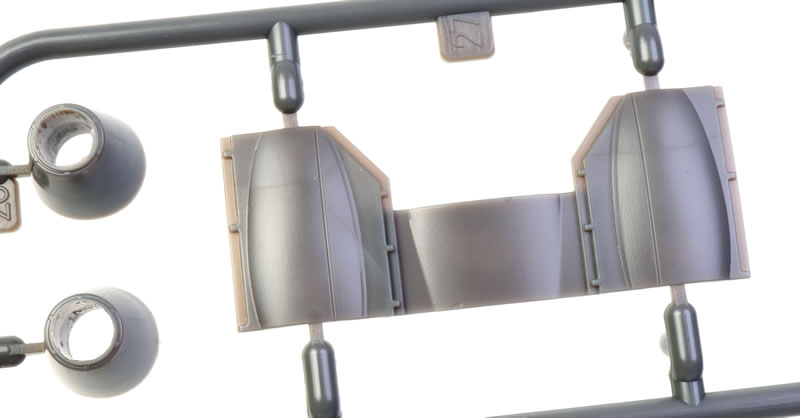
The seated pilot will come in handy with this option. He looks a bit blobby in this greatly magnified photo but I think he will look fine when painted up.

The undercarriage bay front and rear walls and the engine mounts are moulded as part of main wing spars. The main undercarriage sidewalls are slotted over the spars for a rigid fit. Once the upper wing halves are in place, the undercarriage bays should look great.

The engines feature full-length exhaust tubes. The Rolls-Royce Derwent engine faces have detail moulded in solid plastic. They’ll come up nicely after careful painting and an oil wash.
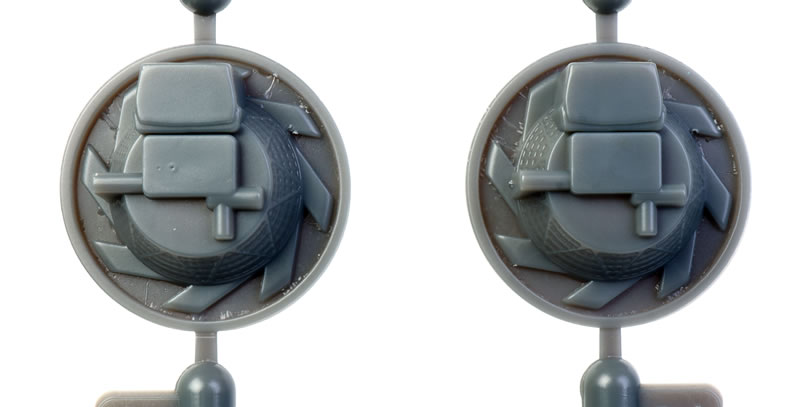
Alternative elevators are offered. One has the standard trim tabs and the other has extended tabs.
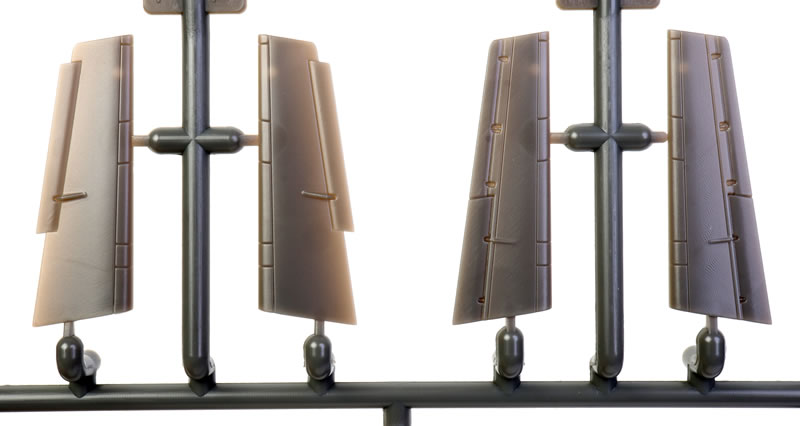
The rudder, elevators and ailerons are all separate parts and may be posed to taste.
Speed brakes are separate parts too, and may be posed open or closed.
More options for the intakes too. Airfix supplies both the small diameter intakes as well as the large (cut back) intakes.
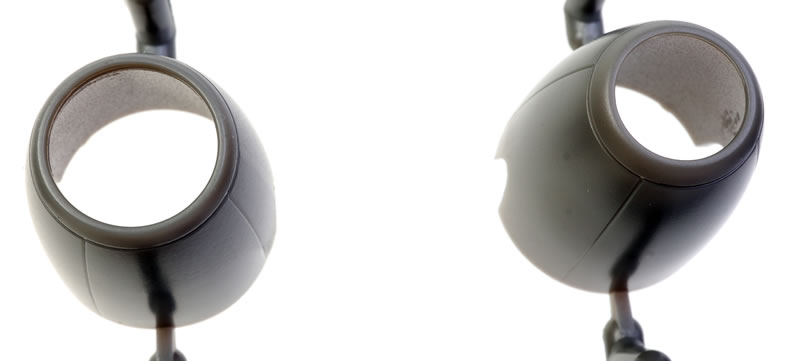
Wing tanks and a conformal belly tank are also provided.
The wheels are broken down in an unusual sequence. The hubs are moulded to the legs and the tyres are hemispherical. Hub detail is excellent. The top of the tyre halves slot into the inside of the mudguards then each half of the leg / wheel assembly are brought together. It's hard to explain in words but clear enough in the instruction illustrations.
Clear parts are supplied for the windscreen, sliding canopy and landing light. Wing tip navigation lights are moulded solid with the wings.
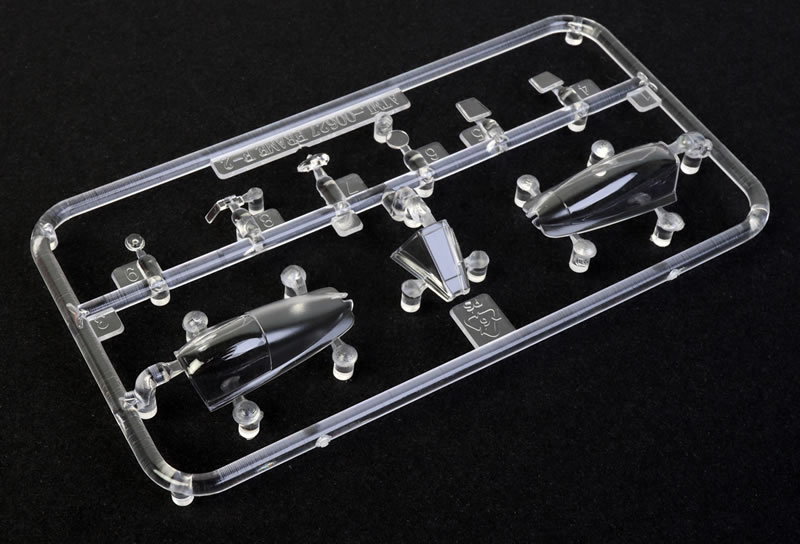
The clear sprue also contains the early-style canopy with the fairing covering the rear and the later clear canopy.
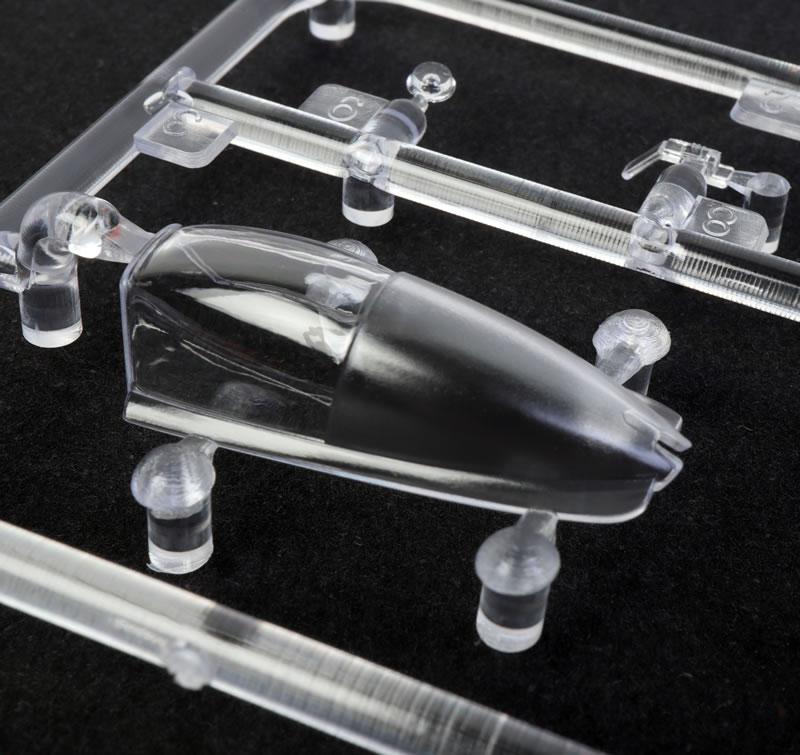
Although not mentioned in the instructions, the clear sprue also includes the Australian ADF fairing (this sits on the spine aft of the canopy), and what appear to be the clear nose camera windows for an FR.9 or PR.10.
We don’t get rockets or rails, but there are flashed over holes for these on the inside of the lower wing halves.
Instructions are called out in 79 illustrated steps in a 16 page stapled A4 booklet. Colour directions are provided for the markings for the many tiny stencils.
Markings
Three varied marking options are offered:
-
Meteor F.8 WF714, 500 Squadron (County of Kent), Royal Auxiliary Air Force, RAF West Mailing, Kent, England, May 1953. This aircraft is finished in overall High Speed Silver paint with colourful tail and fuselage markings.
-
Meteor F.8 WL184 "X", 74 (F) Squadron, RAF Horsham St Faith, Norfolk, England, July 1955. This aircraft is finished in High Speed Silver paint on the lower surfaces and Dark Green / Dark Sea Grey on the upper surfaces with the "Tiger Markings" of 74 Squadron.
- Meteor F.8 EG10 "MN-S", 350 Squadron, Belgian Air Force, Belgium, early 1950s. This aircraft is finished in overall High Speed Silver paint with Belgian Air Force markings.
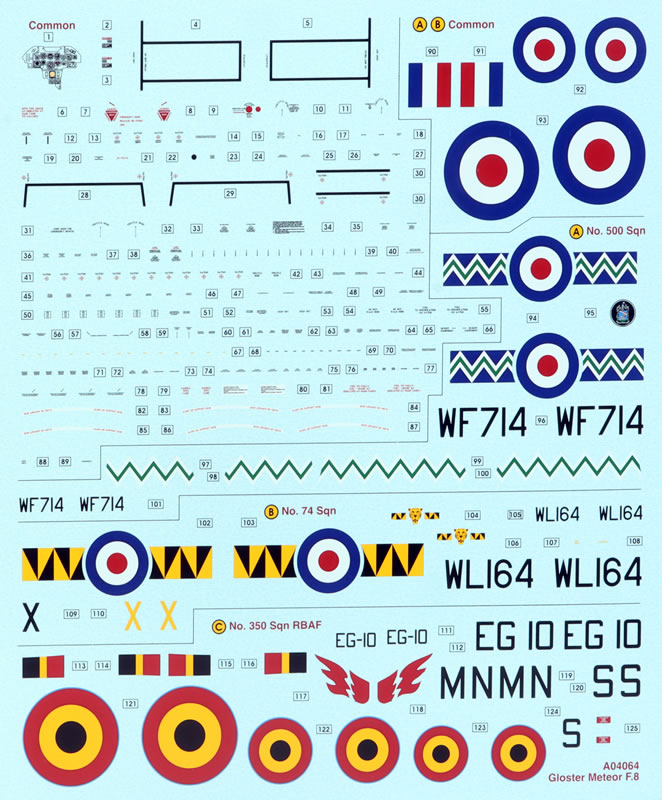
The decals feature perfect registration, rich colours and a glossy finish.
Full stencil markings are included.
This is a really nice kit with a relatively modest parts count, a very high level of detail and plenty of options in the box.
The quality of the plastic is good - smooth and ready for a silver finish without any further preparation.
Surface textures are fine too.
This kit pips the old Xtrakit / Special Hobby kits to the post in terms of surface textures, and boasts clearly superior detail. With long-run locating pins and tabs, the Airfix kit should be easier to build too.
Airfix's 1/72 scale Meteor F.8 is a nicely detailed kit that should appeal to any early jet age fans.
Kit purchased by reviewer from Hannants.
Text and Images Copyright © 2021 by Brett Green
Page Created 9 November, 2022
Last updated
9 November, 2022
Back to HyperScale Main Page |
